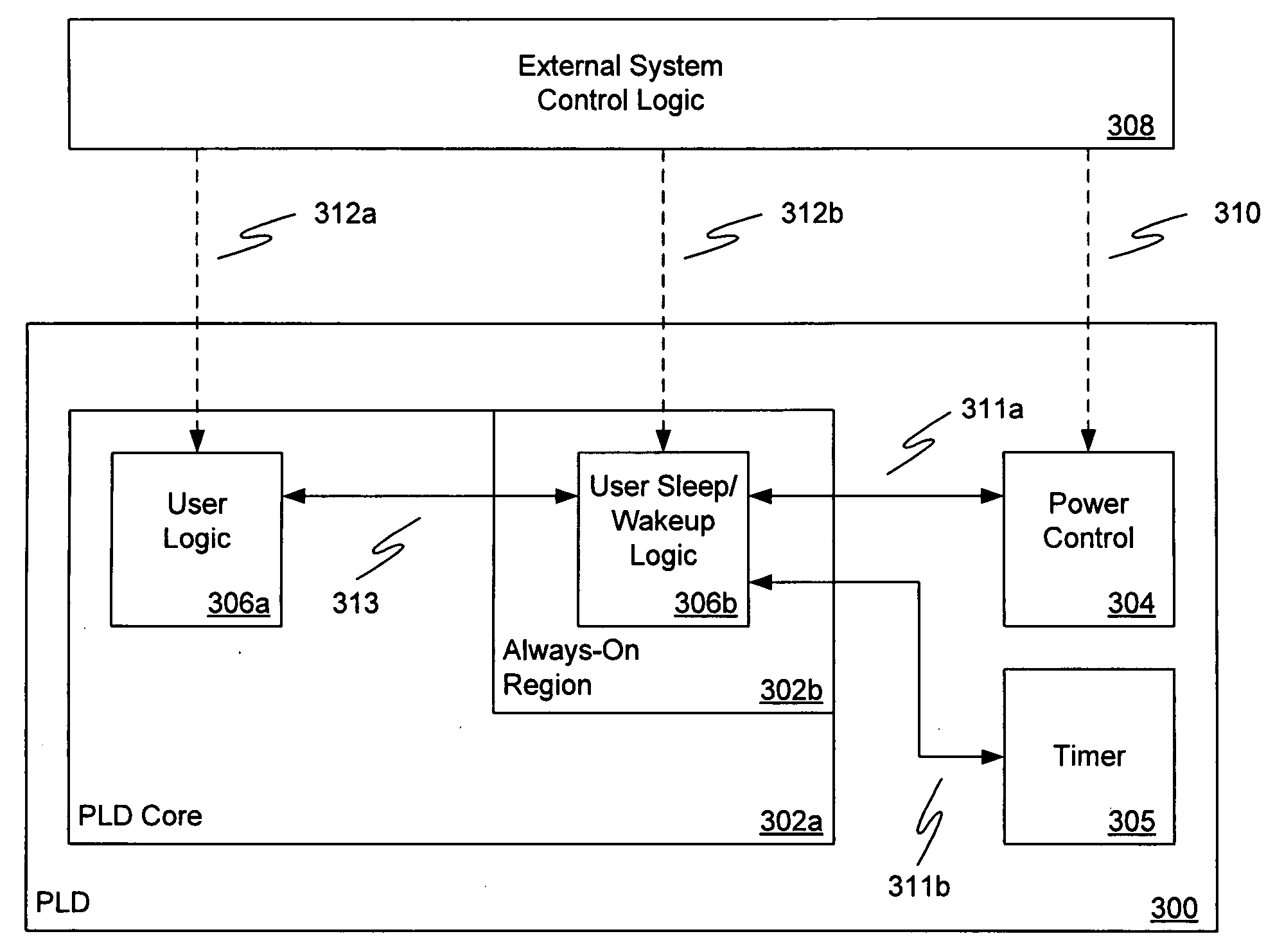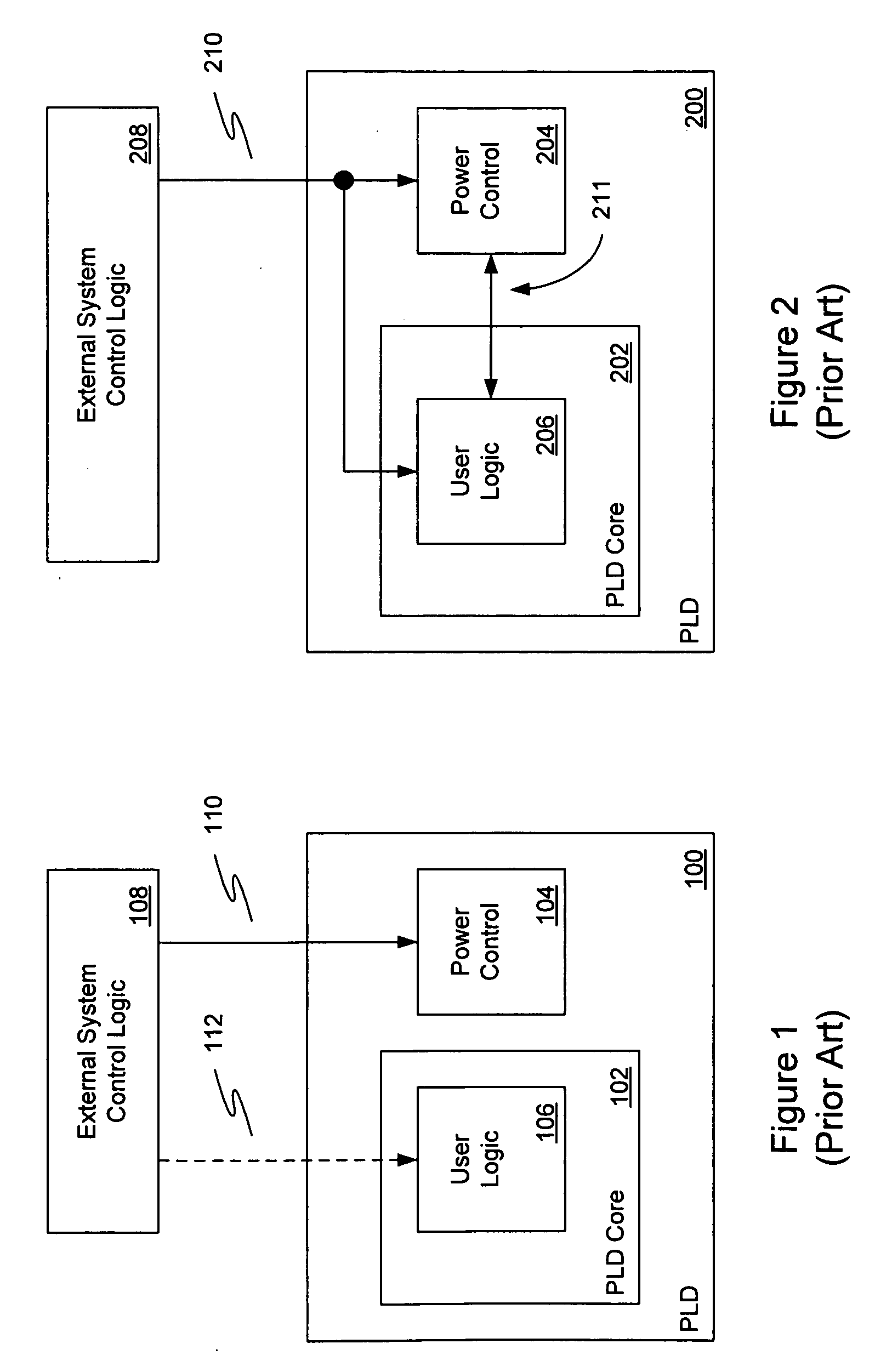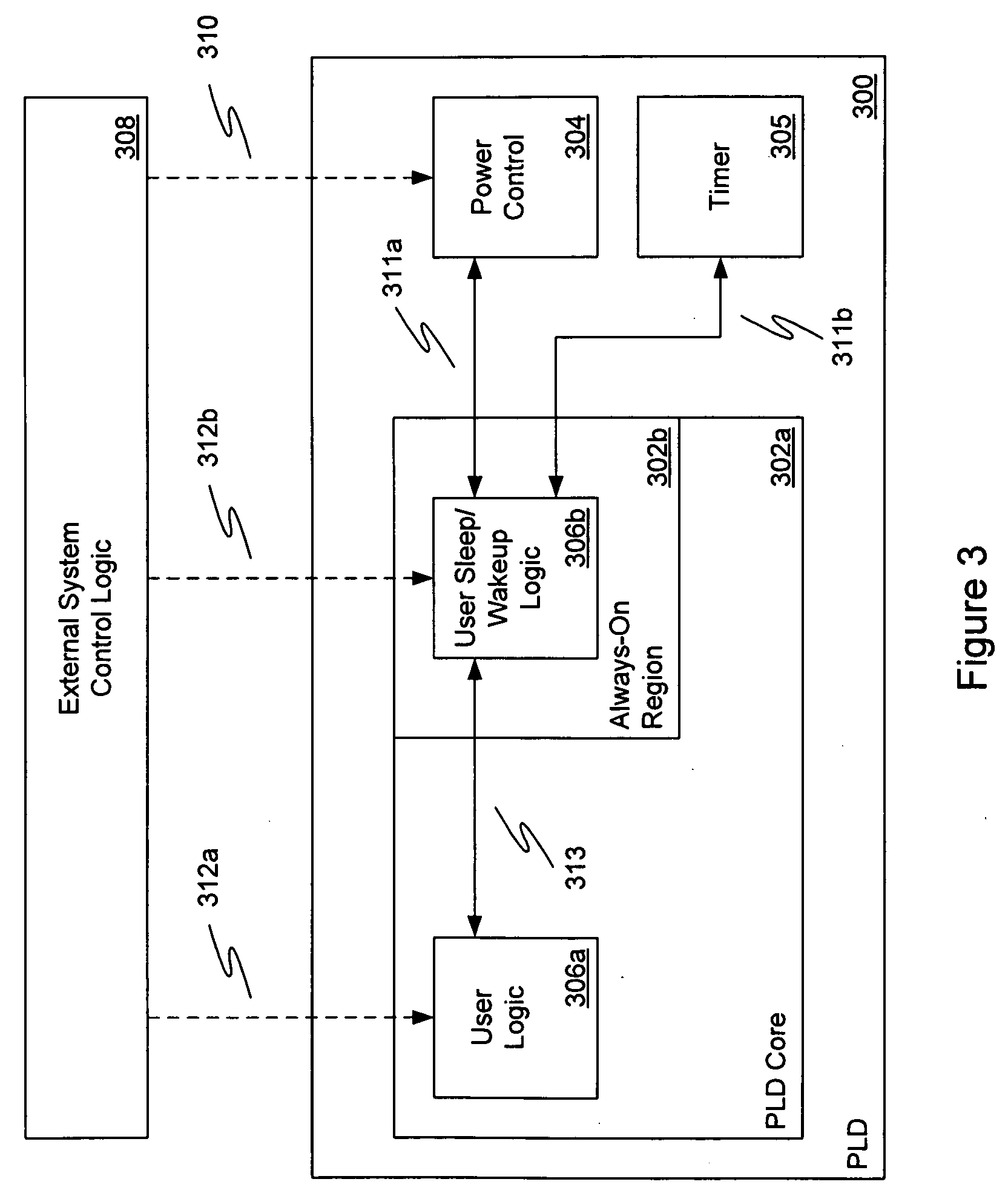Pld providing soft wakeup logic
a technology of soft wakeup logic and pld, which is applied in the field of integrated circuits, can solve the problems of power consumption reduction, affecting the majority of the total cost of the pld to the battery life of the system, so as to reduce the power consumption, reduce the voltage, and reduce the gate leakage
- Summary
- Abstract
- Description
- Claims
- Application Information
AI Technical Summary
Benefits of technology
Problems solved by technology
Method used
Image
Examples
Embodiment Construction
[0036]Persons of ordinary skill in the art will realize that the following description of the present invention is illustrative only and not in any way limiting. Other embodiments of the invention will readily suggest themselves to such skilled persons.
[0037]FIG. 3 shows an illustrative PLD 300 of the present invention. PLD 300 comprises a PLD core 302a that can be placed in a low-power or sleep mode. PLD core 302a has an always-on region 302b that always remains powered up as long as PLD 300 is powered up. The user's design is programmed into PLD core 302a and 302b together as a single design by the design software. The parts of the design that need to remain active during a low-power mode will be specified by the end user to be placed into always-on region 302b while the balance of the design will be placed into PLD core 302a which can be powered down (or otherwise placed in a low-power state with the power supplies still coupled to the power supply terminals in some embodiments)....
PUM
 Login to View More
Login to View More Abstract
Description
Claims
Application Information
 Login to View More
Login to View More - R&D
- Intellectual Property
- Life Sciences
- Materials
- Tech Scout
- Unparalleled Data Quality
- Higher Quality Content
- 60% Fewer Hallucinations
Browse by: Latest US Patents, China's latest patents, Technical Efficacy Thesaurus, Application Domain, Technology Topic, Popular Technical Reports.
© 2025 PatSnap. All rights reserved.Legal|Privacy policy|Modern Slavery Act Transparency Statement|Sitemap|About US| Contact US: help@patsnap.com



